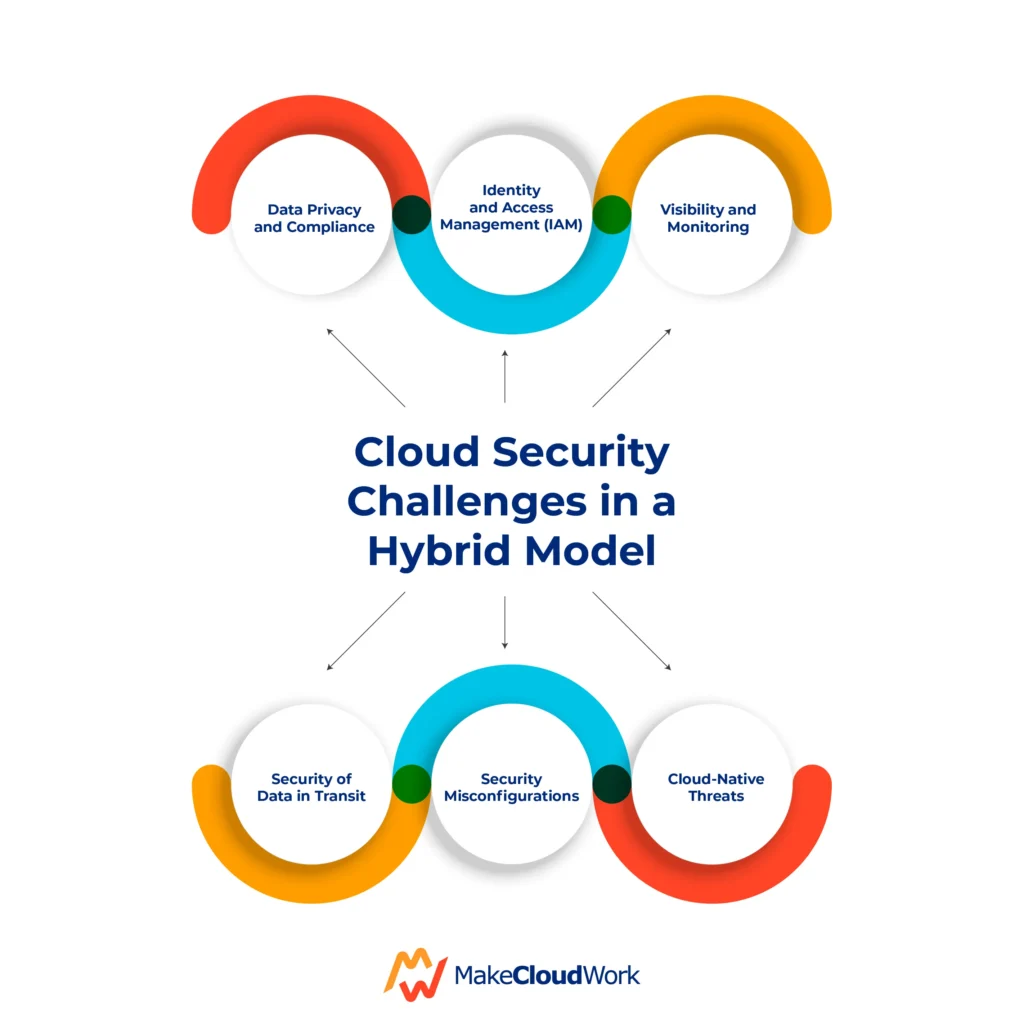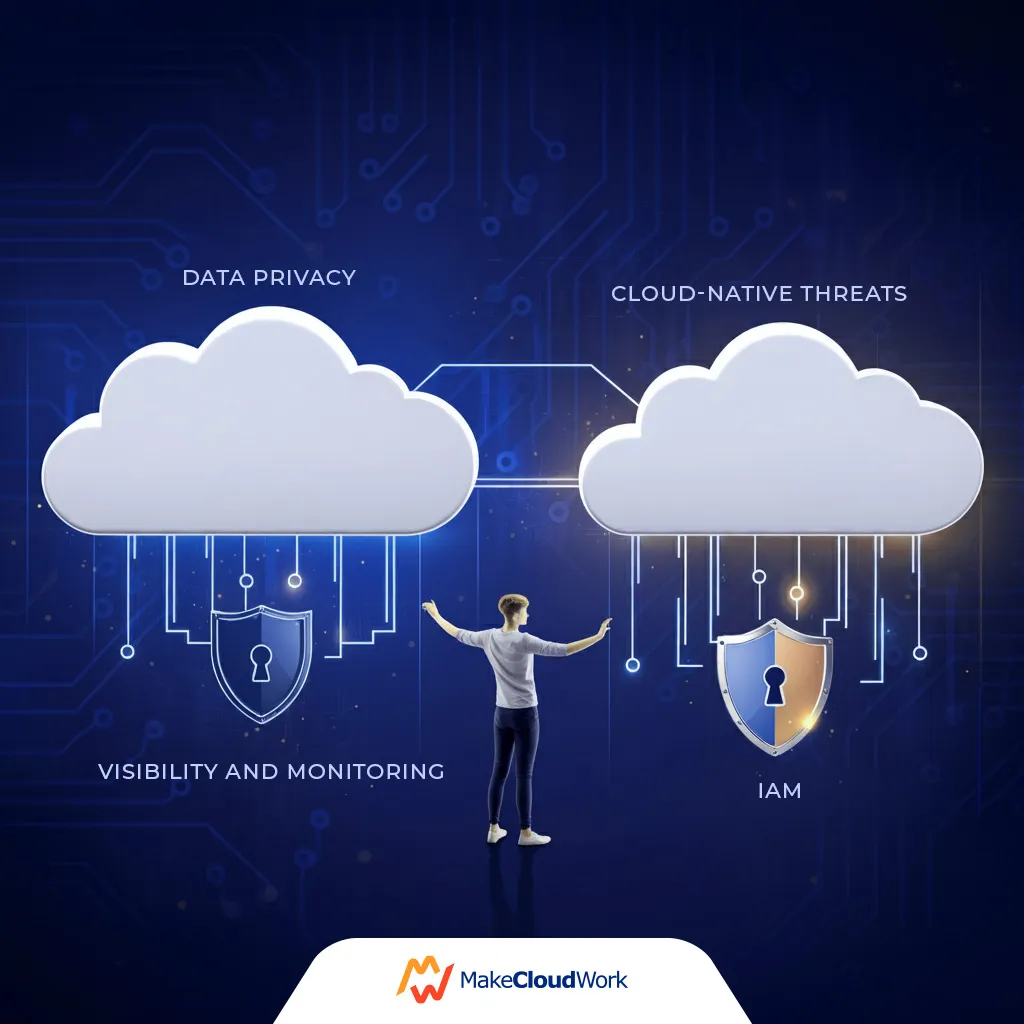Table of Contents
As businesses increasingly adopt hybrid cloud environments to balance flexibility, control, and cost-efficiency, securing this complex infrastructure has become a top priority. The hybrid model, which blends on-premises infrastructure with cloud services, offers the best of both worlds but also introduces unique security challenges that organizations must address to maintain data integrity and compliance.
Understanding the Hybrid Cloud Model
A hybrid cloud integrates both private (on-premises) and public (cloud-based) infrastructures, allowing organizations to store sensitive data in their private data centers while leveraging the public cloud for scalability, cost-effectiveness, and innovation. While this model brings many benefits, it also expands the attack surface, making security a more intricate task. With proper cloud security training, professionals can better understand how to secure such a vast and dynamic environment.

Additionally, hybrid cloud adoption often involves integrating legacy on-premises systems with modern cloud solutions. Such integration can be challenging, particularly when bridging the gap between older security protocols and the latest cloud-native technologies. To effectively secure a hybrid environment, organizations need to embrace a security approach that unifies these differing systems while also ensuring compliance with industry standards and regulations. Proper training and a comprehensive understanding of traditional and cloud-native security measures are essential to secure these interconnected environments effectively.
1. Data Privacy and Compliance
In a hybrid cloud environment, sensitive data may be stored across multiple locations, including private data centers and public cloud services. This dispersal of data complicates the process of maintaining data privacy and meeting compliance standards like GDPR, HIPAA, or PCI-DSS. Ensuring that data is protected regardless of its location is crucial, but achieving this requires clear policies and security measures.
2. Identity and Access Management (IAM)
Managing identities and access across diverse platforms is one of the most critical security challenges in a hybrid cloud model. Unauthorized users can exploit gaps between on-premises and cloud systems, leading to data breaches or unauthorized access.
3. Visibility and Monitoring
In a hybrid model, gaining complete visibility into the security state of both cloud and on-premises infrastructure is challenging. Without the ability to monitor the entire environment effectively, detecting and responding to security incidents becomes difficult. Cloud environments may introduce blind spots if not integrated with on-premises security tools.
4. Security of Data in Transit
In a hybrid cloud environment, data frequently moves between private data centers and public cloud services. Ensuring data is securely transmitted across both environments is critical to prevent unauthorized access or man-in-the-middle attacks.
5. Security Misconfigurations
Misconfigurations are among the leading causes of security breaches in cloud environments. In a hybrid model, security configurations must be consistent across both on-premises infrastructure and cloud platforms. Failure to properly configure security settings can lead to vulnerabilities.
6. Cloud-Native Threats
As organizations expand their hybrid environments, they must account for cloud-native threats such as insecure APIs, container vulnerabilities, and cloud service misconfigurations. These threats are specific to cloud infrastructure and require cloud-native security solutions to mitigate.
How Training Helps
Proper cloud security training equips professionals with the knowledge and skills needed to tackle the unique challenges of a hybrid cloud model. Here’s how:
- Training provides an in-depth understanding of compliance regulations and best practices for data protection across diverse environments.
- Cloud security training helps teams set up robust IAM solutions, ensuring consistent access control across platforms.
- Training enhances knowledge on unified monitoring solutions and cloud-native security tools for better visibility.
- Security professionals learn encryption protocols and strategies for ensuring data in transit remains protected.
- Training minimizes human error by educating teams on proper configuration management and automation tools.
- Cloud-native security training helps organizations address specific risks like API security and container vulnerabilities.
At MakeCloudWork, we provide tailored training programs that cover the latest in hybrid cloud security. Our courses are designed to help professionals enhance their skills, improve security postures, and confidently manage hybrid environments. With the right training, you can ensure your organization’s hybrid cloud remains secure and compliant.






